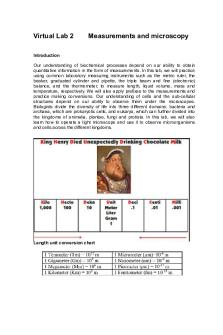Lab 12 - Instrumentation and Measurements Lab Manual PDF

| Title | Lab 12 - Instrumentation and Measurements Lab Manual |
|---|---|
| Author | Bilal Arif |
| Course | instruments and measurements |
| Institution | University of Management and Technology |
| Pages | 3 |
| File Size | 199.1 KB |
| File Type | |
| Total Downloads | 23 |
| Total Views | 177 |
Summary
Instrumentation and Measurements Lab Manual...
Description
Instrumentation and Measurements Lab Lab 12 Name: _______________________ ID: ____________________
Date: ____/____/_______
Experiment # 12: Implementation of Motor Forward and Reverse Direction using Relays and HMI (CLO 3, PLO 5)
Objective: • •
To realize function of relays using ladder programming. Implementation of Motor forward and reverse using relays.
Software Required: SIMATIC STEP 7 (TIA Portal) Apparatus Required: • • • • • •
PC with STEP 7 installed Siemens S7-1200 PLC HMI 2 Relays 2-24V DC Motor 2 Lamps for indication
Introduction: A hardwired control circuit can be represented by conventional hardwired relay ladder diagram. In any hardwired circuit, there should be electrical continuity in order for the load to energize. Electrical sequence of operation in hardwired relay circuits can be represented by electrical ladder diagram. Ladder diagram shows the interconnection of field devices. In the ladder diagram, each rung show how a field device is turned on and also shows how it interacts with next field devices. The difference between a PLC ladder program and relay ladder rungs is the continuity. In an electrical rung diagram, there is an electrical continuity only when the current flows from left power rail to right power rail. Even though PLC ladder logic was modeled after the conventional relay ladder, there is no electrical continuity in PLC ladder logic. PLC ladder rungs should have logical continuity for the output to energize. PLC ladder program uses familiar terms like "rungs" and "normally open" and “normally closed" contacts, but the relay ladder logic has no electrical continuity between an input and the controlled output.
74
Instrumentation and Measurements Lab Lab 12
Before connecting Motor: 1. Check the Rating of PLC output Relay voltage, current etc. 2. You must use External Relay, it should be actuated by DC supply 3. Check the input Rating of Relay, connection of input requires mentioned voltage as per the PLC manual Above precaution should be taken before making the connections, otherwise wrong rating or connection may cause damage to the PLC.
Lab Task: Consider a motor controlled by forward and reverse push button switches;
• When the “Forward” pushbutton is actuated, M1 will energize, • When the pushbutton is released, the closed M1 auxiliary contact will maintain current to the coil of M1, thus latching the “Forward” circuit in the “on” state.
• The same sort of thing will happen when the “Reverse” pushbutton is pressed. •
Prevent the forward and reverse contactors from being activated at the same time.
• Now, if either forward or reverse circuits are latched, they should be “unlatched” by momentarily pressing the “Stop” pushbutton, which will open either forward or reverse circuit.
• • • •
75
Forward, reverse and stop push buttons on HMI Lamp indication on HMI use lamp for indication of output. also draw and explain your ladder logic diagram.
Instrumentation and Measurements Lab Lab 12 Ladder Diagram
Explanation:
Conclusion:
Instructor’s Signature
76
Marks Obtained...
Similar Free PDFs
Popular Institutions
- Tinajero National High School - Annex
- Politeknik Caltex Riau
- Yokohama City University
- SGT University
- University of Al-Qadisiyah
- Divine Word College of Vigan
- Techniek College Rotterdam
- Universidade de Santiago
- Universiti Teknologi MARA Cawangan Johor Kampus Pasir Gudang
- Poltekkes Kemenkes Yogyakarta
- Baguio City National High School
- Colegio san marcos
- preparatoria uno
- Centro de Bachillerato Tecnológico Industrial y de Servicios No. 107
- Dalian Maritime University
- Quang Trung Secondary School
- Colegio Tecnológico en Informática
- Corporación Regional de Educación Superior
- Grupo CEDVA
- Dar Al Uloom University
- Centro de Estudios Preuniversitarios de la Universidad Nacional de Ingeniería
- 上智大学
- Aakash International School, Nuna Majara
- San Felipe Neri Catholic School
- Kang Chiao International School - New Taipei City
- Misamis Occidental National High School
- Institución Educativa Escuela Normal Juan Ladrilleros
- Kolehiyo ng Pantukan
- Batanes State College
- Instituto Continental
- Sekolah Menengah Kejuruan Kesehatan Kaltara (Tarakan)
- Colegio de La Inmaculada Concepcion - Cebu















